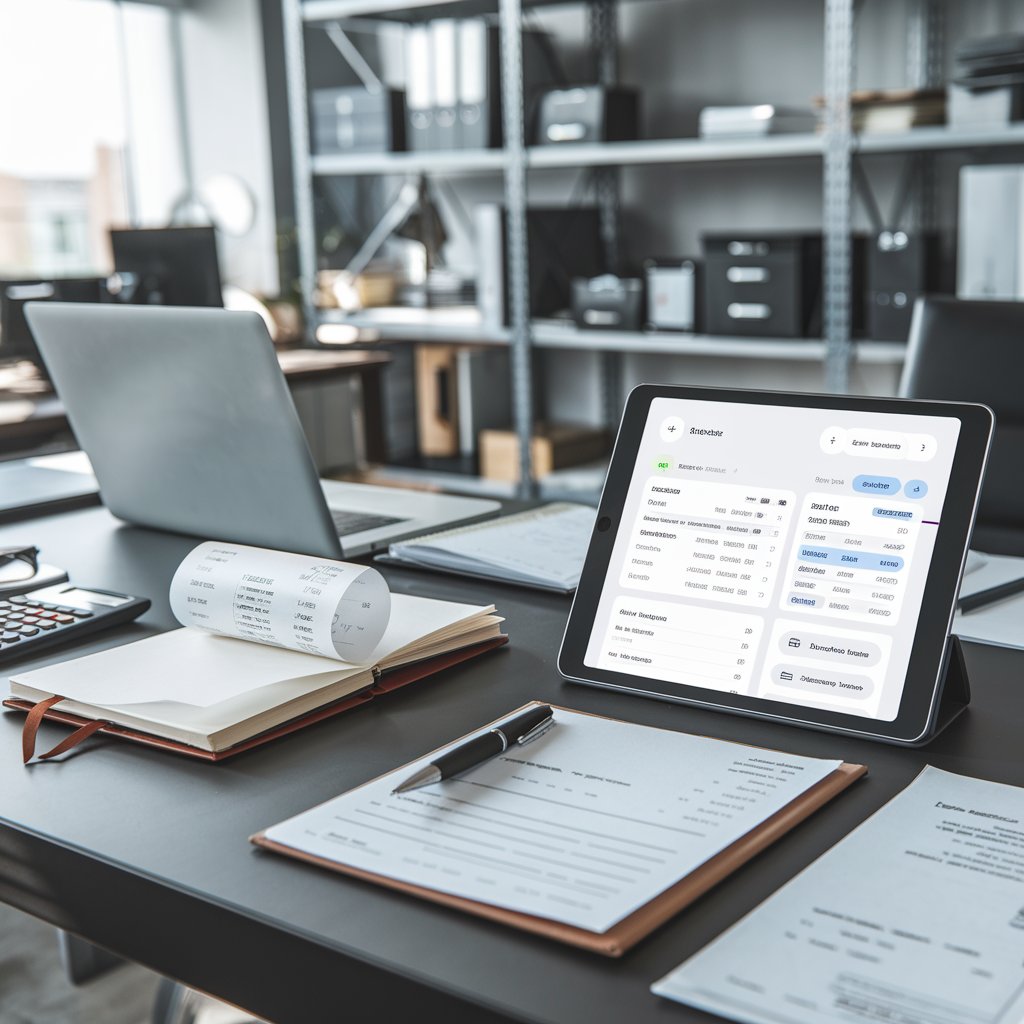Digital vs. Physical Receipt Books: A Modern Business Guide

Key Takeaways ReceiptBooks
- Understanding the evolution from physical to digital receipt books
- Pros and cons of both traditional and digital receipt systems
- How to choose the right receipt management solution
- Best practices for receipt management in modern business
- Legal requirements and compliance considerations
Introduction: The Changing World of Receipt Management
In today’s business landscape, managing receipts effectively can mean the difference between smooth operations and administrative chaos. Whether you’re running a small retail shop or managing a large logistics company, understanding your receipt management options is crucial for success.

What Is a Receipt Book?
A ReceiptBooks is a fundamental business tool used to:
- Document financial transactions
- Provide proof of purchase
- Track sales and payments
- Maintain financial records
- Support tax compliance
Traditional Receipt Books
Traditional receipt books typically include:
- Carbon copy or NCR (No Carbon Required) pages
- Pre-printed sequential numbers
- Multiple copies (usually 2-3 per receipt)
- Company information fields
- Space for transaction details
Digital Receipt Solutions
Modern digital alternatives offer:
- Electronic generation and storage
- Cloud-based backup
- Integration with accounting software
- Mobile accessibility
- Automated record-keeping
Comparing Physical vs. Digital ReceiptBooks
Advantages of Physical ReceiptBooks
- Reliability
- No dependency on technology
- Works during power outages
- Immediate availability
- Simplicity
- No learning curve
- No technical skills required
- Straightforward usage
- Cost-Effective for Small Operations
- Low initial investment
- No subscription fees
- No maintenance costs
Advantages of Digital Receipt Books
- Efficiency
- Automated data entry
- Quick search and retrieval
- Bulk processing capabilities
- Environmental Impact
- Reduced paper waste
- Lower carbon footprint
- Sustainable business practices
- Advanced Features
- Integration with other business tools
- Customizable templates
- Automated backup
- Multi-device accessibility

Making the Right Choice for Your Business
Consider These Factors:
- Business Size
- Small businesses might start with physical books
- Growing businesses benefit from digital solutions
- Enterprise-level operations typically require digital systems
- Transaction Volume
- Low volume: Physical books may suffice
- High volume: Digital solutions offer better efficiency
- Mixed volume: Hybrid solutions might work best
- Budget Considerations
- Initial costs vs. long-term savings
- Implementation expenses
- Training requirements
- Technical Capabilities
- Staff comfort with technology
- Available IT support
- Integration requirements
Best Practices for Receipt Management
Physical Receipt Books
- Organization
- Store in a safe, dry place
- Use sequential numbering
- Maintain backup copies
- Regular auditing
- Documentation
- Clear handwriting
- Complete all fields
- Proper dating
- Secure storage
Digital Receipt Systems
- Setup
- Regular backups
- Cloud storage
- Security measures
- User training
- Maintenance
- Software updates
- Regular audits
- Data cleanup
- Security reviews
ReceiptBooks Legal and Compliance Considerations
Record Keeping Requirements
- Minimum retention periods
- Storage conditions
- Accessibility requirements
- Audit trail maintenance
Tax Compliance
- IRS requirements
- State regulations
- Industry-specific rules
- International considerations

Implementing a New Receipt System
Step-by-Step Transition Guide
- Assessment
- Evaluate current needs
- Review available options
- Consider future growth
- Planning
- Set timeline
- Allocate resources
- Train staff
- Test systems
- Implementation
- Gradual rollout
- Monitor progress
- Gather feedback
- Make adjustments

Common Questions Answered
Q: How long should I keep receipts? A: Generally, keep receipts for at least 3-7 years, depending on tax jurisdiction and business type.
Q: Can digital receipts be used for tax purposes? A: Yes, the IRS and most tax authorities accept digital receipts if they’re clearly legible and properly stored.
Q: What happens if I lose my receipt book? A: Follow these steps:
- Document the loss
- Review security measures
- Implement recovery procedures
- Contact relevant authorities if necessary

Future of Receipt Management
Emerging Trends
- Blockchain receipts
- AI-powered categorization
- Real-time expense tracking
- Mobile-first solutions
Technology Integration
- Smart device connectivity
- Cloud synchronization
- Automated reconciliation
- Predictive analytics
Conclusion
The choice between physical and digital receipt books depends on your specific business needs, size, and capabilities. While traditional receipt books still have their place, digital solutions offer significant advantages for growing businesses. Consider your options carefully and choose a solution that will support your business both now and in the future.
Additional Resources
- IRS documentation guidelines
- Digital receipt management tools
- Receipt organization templates
- Compliance checklists
